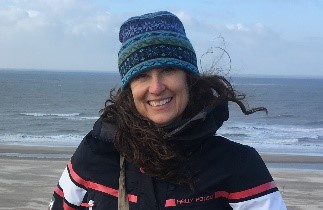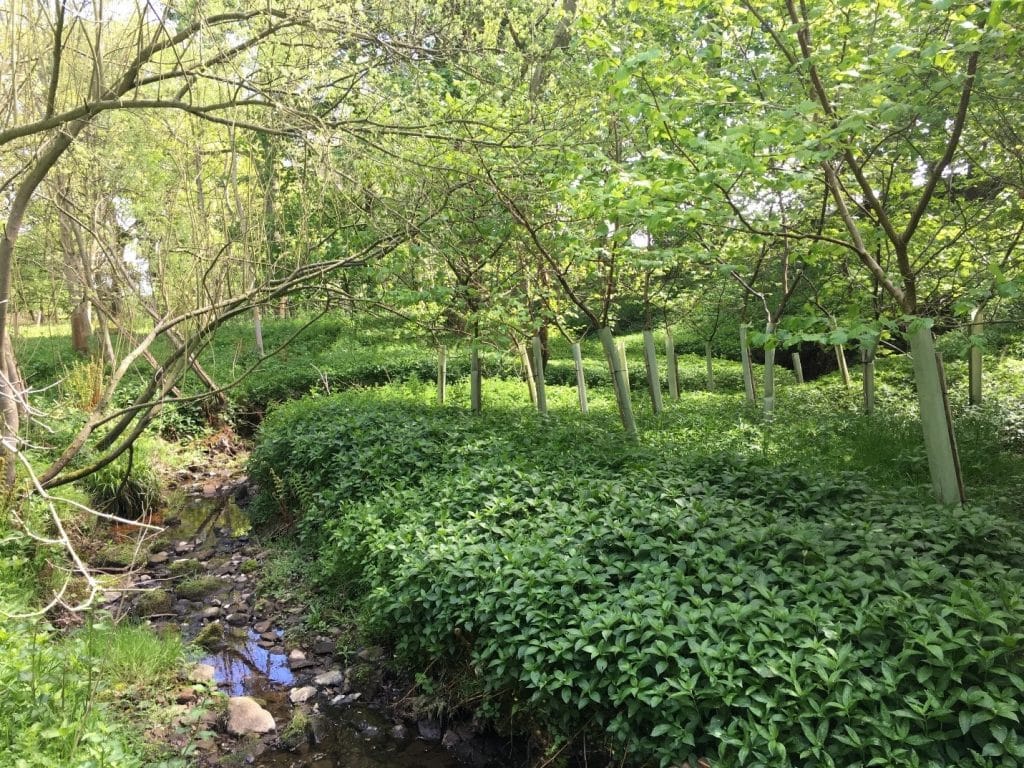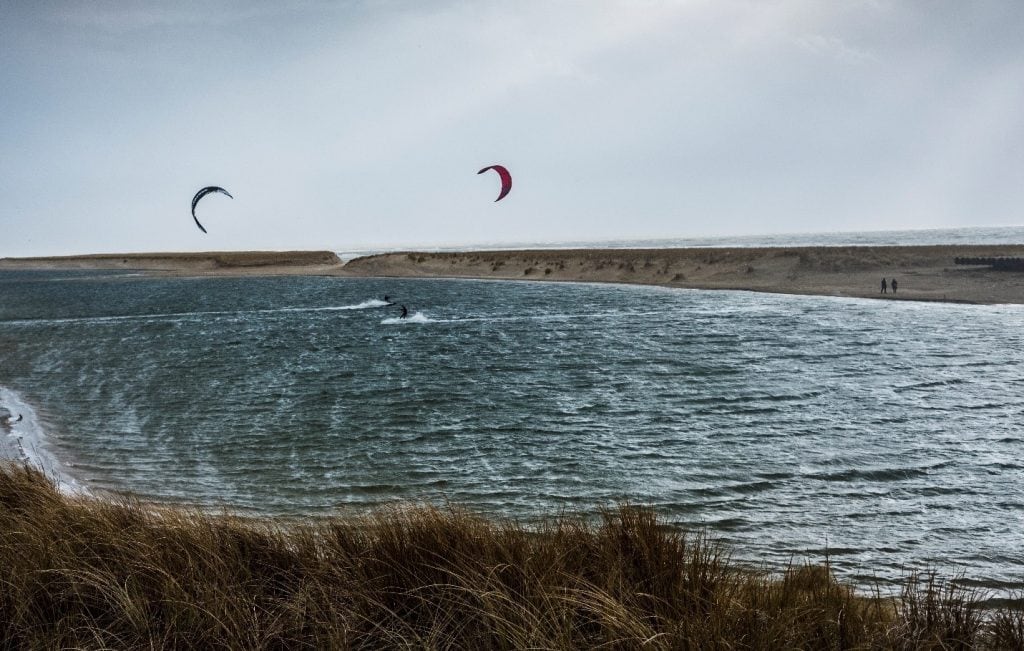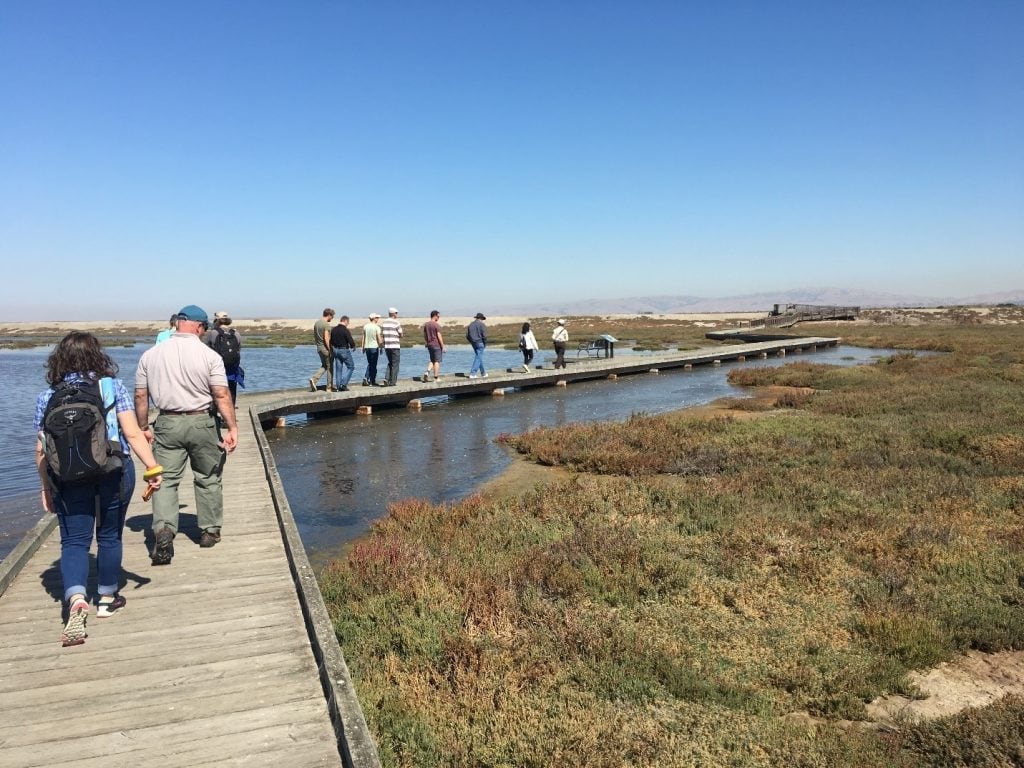Partnerships, are critical to fostering a common vision to move the science and practice of nature-based solutions forward.
By Paula E. Whitfield, Research Ecologist with the National Oceanic and Atmospheric Administration, National Centers for Coastal Ocean Science, and Co-Lead of the “Islands” chapter in the International Guidelines on Natural and Nature-Based Features for Flood Risk Management.

“By using natural features, such as marshes, dunes, reefs, islands, and mangroves, to protect coastal communities, we can also improve habitats that support commercially and recreationally important species and enhance opportunities for aquaculture.” remarked Dr. Rick Spinrad, NOAA Administrator, in his recorded message during the 16 September 2021 virtual launch event celebrating the publication of the International Guidelines on Natural and Nature-Based [NNBF] Features for Flood Risk Management. As I heard this message of support from the NOAA Administrator and from other organizational leaders involved in this 5-year effort, I felt nostalgic thinking about my time spent working on the NNBF International Guidelines, or the Guidelines for short. As a research ecologist with NOAA’s National Centers for Coastal Ocean Science (NCCOS) and someone who can’t live without nature, contributing to the Guidelines as one of the 175+ authors and contributors made me feel like I was part of a global effort to advance sustainable solutions.

We live in a multi-hazard world where sea level rise, increased storm intensity and frequency, flooding events, and loss of habitat and biodiversity continue to threaten and impact our lives, livelihoods, and ecosystems. As such, scientists and coastal managers must explore the use of green infrastructure and other creative methods to mitigate the effects of these events on coastal communities. Dr. Spinrad said it best when he noted in his recorded remarks that, “Solutions that reduce the impacts of these hazards, while also addressing the demands on the use of our natural resources for commerce, food, energy, recreation, and conservation, will require methods and approaches that cannot be solely addressed through the use of traditional hardened infrastructure.”
However, culture change is never easy, and moving the needle toward the use of natural systems as an alternative to conventional, or “gray,” infrastructure requires changing centuries of thinking and hubris about the true benefits and costs of gray infrastructure and what has been lost along the way. Chapter 1 of the Guidelines acknowledges that while gray infrastructure has produced major engineering feats of benefit to humankind, it has also brought mixed results, noting, “The historical approach to infrastructure development was guided, to a significant degree, by the use of human engineering to ‘conquer’ nature rather than ‘collaborate’ with nature.”
Moving the needle back to nature, so to speak, is where the twenty chapter, 1000-page, NNBF Guidelines will help out. NNBF, such as islands, marshes, dunes, beaches, and reefs, also known as natural infrastructure or nature-based solutions, can provide storm and flood risk reduction, have the capacity to be sustainable in the face of changing conditions, and provide a host of environmental and socioeconomic benefits, making them a preferred alternative to traditional gray infrastructure, like seawalls and bulkheads. The Guidelines is a comprehensive state of knowledge on NNBF that is intended for practitioners and resource managers. It provides evidence of the value and benefits of NNBF and the framework for advancing NNBF solutions across the entire project lifecycle and watershed, from planning, scoping, and design to implementation and adaptive management.

The effort, which involved bringing together 175+ authors and contributors from 77 organizations and 10 countries to complete this comprehensive international document, is nothing short of Herculean. While large collaborative efforts such as this are not the path of least resistance, I would argue that the partnerships and relationships produced from this effort provide nearly as much value-added as the document itself. Looking back on the sometimes bumpy path, I feel grateful and fortunate that I was among the 10 NOAA subject matter experts who contributed to this effort.
In the beginning, I admit I had my doubts (although I never voiced them) as to how this ambitious undertaking would take shape. But slowly, year after year, from 2016 to 2020, in meeting after meeting, seven in-person meetings total, I observed the diverse and sometimes disparate viewpoints of the participants and agencies coalesce into a common vision and goal for the document, all under the patient and inspired leadership of Dr. Todd Bridges, Senior Scientist for the U.S. Army Corps of Engineers (USACE) Engineer Research and Development Center and National Lead of the USACE’s Engineering With NatureⓇ (EWNⓇ) Initiative.
This common vision was forged through knowledge sharing, candid conversations, and NNBF site visits and at its core centers on the general acknowledgment of the inherent power of nature to meet the multifaceted, 21st-century global challenges and to move toward a more sustainable and socially just future.
The highlight of each international meeting was the site visits that showcased the benefits and opportunities of NNBF within each host country, many of which are included as case studies in the Guidelines. In the Netherlands (NL), we toured vast beach, dune, and bioswale features constructed to protect both infrastructure and people living below sea level along the North Sea coast. During one of the site visits to a large created dune system near the city of Vlissingen, NL, I watched as songbirds flitted within the tall dune grasses and imagined living nearby, taking long walks and sipping morning cups of coffee on a bench high atop a dune overlooking the North Sea. On another NL site visit, kiteboarders skimmed the water of a newly created back bay lagoon while families shared quality time walking along the expansive beach system fronting the dunes.

In Scotland and England, we toured NNBF sites designed to “make room for the water.” Here, they worked with local landowners and municipalities to construct NNBF within the upper and lower reaches of watersheds. These features served to slow water flow and facilitate the lateral spread of water, reducing peak flood events in nearby communities. At a project site near Alkborough Parish, England, our group shared a scenic overlook with an artist to view a 400-hectare farmland-to-wetland conversion project, known as a “managed realignment.” This created wetland located at the confluence of the Ouse and Trent Falls River and the Humber Estuary was constructed to reduce upstream flooding for the Town of Goole.
In San Francisco Bay, California, we toured large-scale salt-pond restoration projects that are transforming once barren salt flats to intertidal marsh to provide flood protection for vulnerable communities, habitat for threatened and endangered species, and recreation opportunities.

While the site visits had a profound effect on my thinking about the importance of scale and what is possible when you collaborate with nature, these projects also highlight the importance of partnerships, multidisciplinary, multisector partnerships that include local community engagement. Engaging my Guidelines collaborators and our host organizations in their respective countries and meeting their networks of practitioners reminds me of the “matchmaker mindset” that Dr. Steve Thur, Director of NOAA’s National Centers for Coastal Ocean Science, described in his response to a question during the panel session of the Guidelines launch. He offered, “If we reframe our view from ‘who can I partner with’ to ‘who in my network can I connect with others,’ the partner pool will expand rapidly.” Dr. Thur is right about this! I’ve been fortunate to benefit from that experience as part of this 5-year project.
Partnerships are also critical to the planning, design, implementation and adaptive management of NNBF. For example, islands, whether large or small, newly created or restored, often span multiple jurisdictions and sectors, such as Federal, State, private, and nonprofit entities, triggering multiple regulatory requirements. Likewise, research on island performance and environmental benefits requires multiagency and multidisciplinary partnerships. This is in part due to the complex relationships between the physical processes of waves, currents, and sediment movement and the ecological processes of vegetative growth, recruitment, and succession. In fact, the expertise needed to produce the “Island” chapter is reflected in the diversity of author and contributor backgrounds, which included hydrodynamic and sediment transport modelers, coastal engineers, dredging contractors and practitioners, ecologists and biologists with expertise in the beneficial use of sediments for ecosystem restoration.
Working on the “Island” chapter provided an opportunity for several of my co-authors and me to form additional partnerships to conduct research on island performance and benefits, such as at Swan Island in the Chesapeake Bay. My colleague, Enda Murphy, “Island” chapter co-lead and coastal engineer with the National Research Council of Canada, recently observed, “The best part of working on the Guidelines is meeting my “Island” chapter co-authors and others in the International Community doing this work. Working on the Guidelines has opened the door to additional partnerships and projects that would not have happened otherwise.” His sentiment rings true from my perspective as well.

The momentum and partnerships that have evolved from the Guidelines have made it one of the highlights of my career. For example, NOAA NCCOS has expanded our partnership with USACE’s EWN Initiative and the Network for Engineering With Nature (N-EWN) to advance the science and practice of natural infrastructure. We also expanded our partnerships with USACE’s Baltimore District and Philadelphia District and are in engagement talks with the Mobile District and others to conduct research that informs the design, placement, benefits, and adaptive management of islands and other NNBF. We are also developing NNBF partnerships in the vulnerable cold regions of Alaska, Canada, Maine, and New Hampshire to advance NNBF research in these challenging regions.
As I observed and experienced over the past 5 years, partnerships are not easy; but I am now a firm believer that partnerships are critical to fostering a common vision to move the science and practice of nature-based solutions forward. Consequently, the publication of the Guidelines does not represent an end but a jumping off point. Now is the time to capitalize on the inherent power of nature and the momentum gained from this collaborative effort. Because, in the words of Dr. Rick Spinrad,
By working together, we can make the world a better place for people and nature.
Dr. Rick Spinrad, NOAA Administrator
References
Bridges, T. S., J. K. King, and J. D. Simm. 2021. “Chapter 1: The Need and Opportunity for NNBF: An Introduction to the Guidelines.” In International Guidelines on Natural and Nature-Based Features for Flood Risk Management, edited by T. S. Bridges et al. Vicksburg, MS: U.S. Army Engineer Research and Development Center.
Gailani, J. Z., P. Whitfield, E. Murphy, J. de Vries, G. Thomson, W. Mears, and D. Szimanski. 2021. “Chapter 11: Islands.” In International Guidelines on Natural and Nature-Based Features for Flood Risk Management, edited by T. S. Bridges et al. Vicksburg, MS: U.S. Army Engineer Research and Development Center.
King, J. K., T. S. Bridges, and J. D. Simm. 2021. “Chapter 2: Principles, Outcomes, and Frameworks.” In International Guidelines on Natural and Nature-Based Features for Flood Risk Management, edited by T. S. Bridges et al. Vicksburg, MS: U.S. Army Engineer Research and Development Center.
Davis, J., P. Whitfield, D. Szimanski, B. R. Golden, M. Whitbeck, J. Gailani, B. Herman, A. Tritinger, S. C. Dillon, and J. King. 2021. “A Framework for Evaluating Island Restoration Performance: A Case Study from the Chesapeake Bay.” Integrated Environmental Assessment and Management. https://doi.org/10.1002/ieam.4437.
Network for Engineering With Nature www.n-ewn.org




